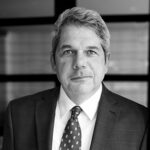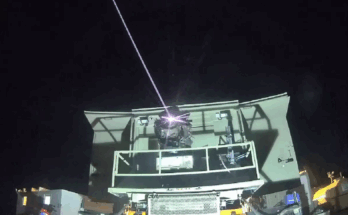
With the rapid, global rise in the development of counter-unmanned aircraft system (C-UAS) technology, and the emergence of countless systems offering unique solutions, a handful of these are rising to the level of actual deployment and real-world use. Among these notable systems is the Drone Dome.
Since its introduction in 2016, Drone Dome – part of the family of air defense systems that includes the Iron Dome – is known to have been acquired by the U.K. MoD and the nations of Dubai and Greece, among others. Made by Israeli defense firm Rafael, it is also likely in extensive use by that nation’s military and security forces.
Greatly adding to Drone Dome’s initial market potential, the U.S. Joint Counter-small UAS Office in late 2022, recommended the anti-drone system for future C-sUAS service, and the U.S. Federal Aviation Administration awarded Rafael a transaction agreement to test the system at Atlantic City International Airport.
More recently, in March 2024, the U.S. Department of Homeland Security Science and Technology Directorate Counter-Unmanned Aircraft (C-UAS) Capability Optimization Research Environment (CORE) selected Rafael to demonstrate the effectiveness of Drone Dome at an important technology demonstration event.
In April 2024 Drone Dome was also offered as part of a solution for a future U.S. Marine Corps contract to provide C-UAS for its installations. The service planned to finalize a winner for the bid later in the year.
Several major components comprise Drone Dome, including an EO sensor, a jamming system, a radar, and a signals intelligence (SIGINT) detector, among other elements. The all-weather system can destroy targets using soft-kill (jamming) and hard-kill (laser) capabilities.
Although there has been an explosion in the development of counter-UAS technology in recent years, such is the pervasive nature of the threat that Drone Dome should remain a strong market competitor, especially given the extensive experience of its maker in the field of airborne threat defense.
Andrew Dardine is lead analyst for Forecast International's Defense Electronic Systems group. He is the primary author of Forecast International's Electronic Warfare Forecast and co-author of Electro-Optical Systems Forecast and C4I Forecast. Andrew is also a regular contributor to FI's Defense & Security Monitor blog, offering insights into developing technologies such as directed-energy and next-generation jamming systems. His analysis of such vital market areas as EO/IR systems and electronic countermeasures technology has been cited in Defense News, Aerospace Daily, and Bloomberg Businessweek, among other news media. He has also written about the electronic defense market for Aviation Week and the Journal of Electronic Defense.




